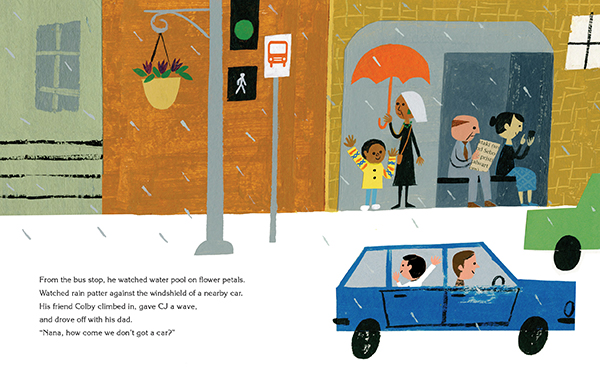This charming book by Sebastian Meschenmoser has the feel of a classic fable. Mr. Squirrel and the Moon begins with an illustration of a large yellow circle of cheese that bounces out of a wheelbarrow, shoots down a hillside and soars off a cliff.
Where-oh-where does it land? You guessed it—on a slender limb on Mr. Squirrel’s tree. You can imagine Mr. Squirrel’s surprise at finding the moon on his branch, and what if someone thinks he’s stolen it? He worries he’ll be put in jail.
Determined to rid himself of the moon, he manages to shove it off the branch and onto the ground—where it lands on Mrs. Hedgehog and gets stuck to her quills. When a billy goat happens along and tries to free her, he impales the moon—with the hedgehog attached—against a nearby tree. Mr. Squirrel watches in dismay as a swarm of bees and a mischief of mice smell the moon and go to town, eating all but a sliver.
Then the goat rigs up a slingshot that flings the sliver of moon into the sky. As the three friends sit and stare at the crescent moon above, Mr. Squirrel trusts it will soon return to its old self again. This clever romp is a perfect bedtime book.
Billie B. Little is the Founding Director of Discovery Center at Murfree Spring, a hands-on museum in Murfreesboro, Tennessee.
This article was originally published in the January 2015 issue of BookPage. Download the entire issue for the Kindle or Nook.





























